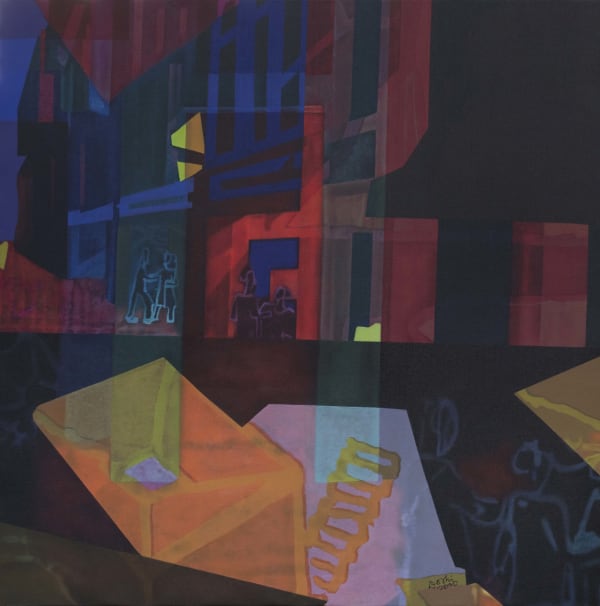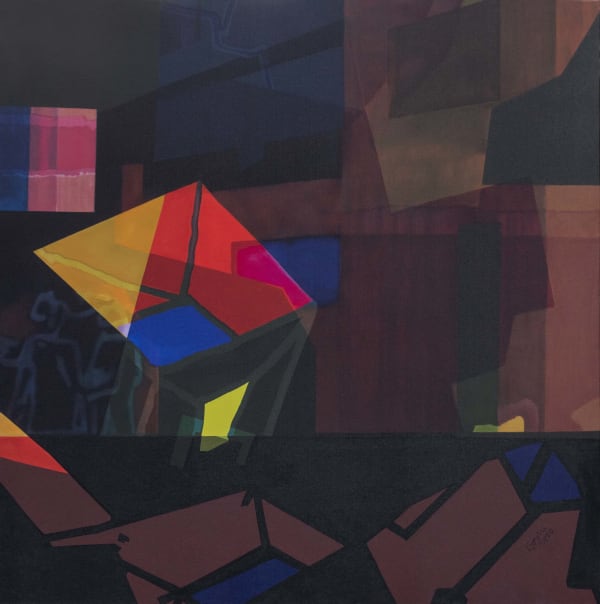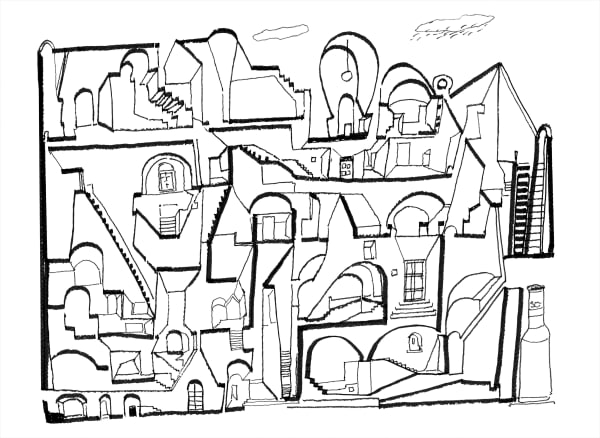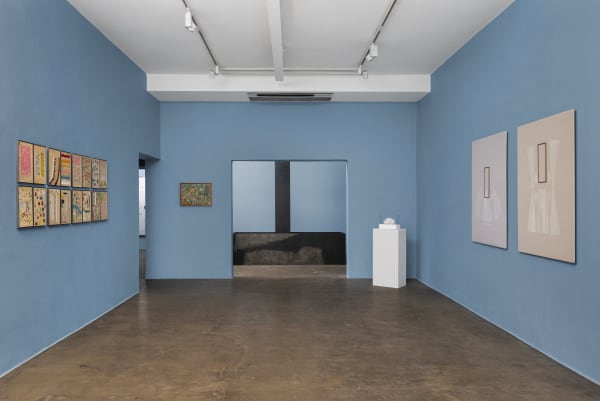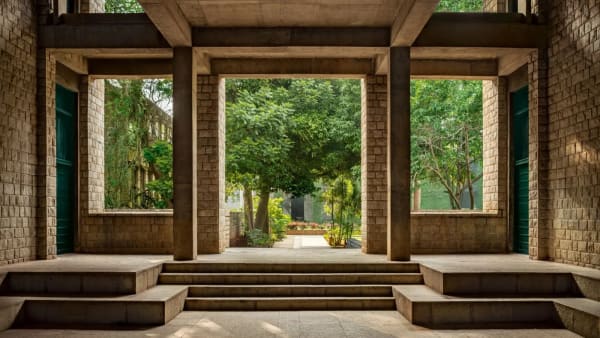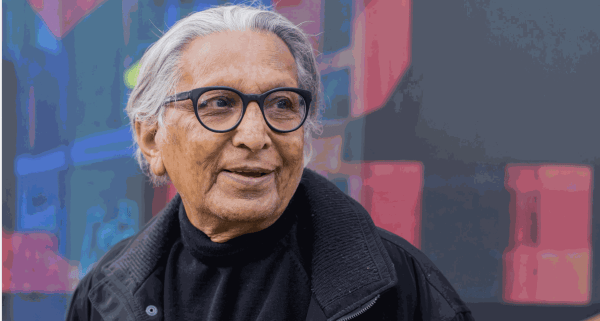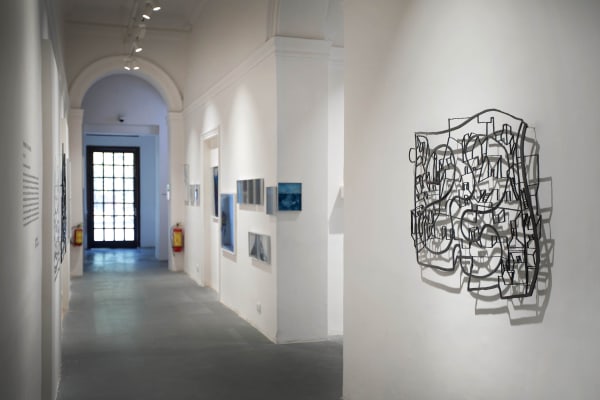Balkrishna Doshi Indian, 1927-2023
Born in 1927 in Pune, Balkrishna Doshi studied architecture at the Sir J.J. School of Architecture in Mumbai. He is the first Indian architect to be awarded the prestigious Pritzker Prize in 2018 and the Royal Institute of British Architects (RIBA) Gold Medal for Architecture in 2022, along with the Padma Shri, the Padma Bhushan, the Ordre des Arts et des Lettres, the Prime Minister’s National Award for Excellence in Urban Planning and Design, a Gold Medal from the Indian Institute of Architects, the Global Award for Lifetime Achievement for Sustainable Architecture, and the Aga Khan Award for Architecture. He is a fellow of the Royal Institute of British Architects as well as the Indian Institute of Architects, and an honorary fellow of the American Institute of Architects. As an academician and urbanist, he founded the School of Architecture, Centre for Environmental Planning and Technology, in Ahmedabad, and was also instrumental in setting up various institutions around the city.
Doshi worked for four years with Le Corbusier as senior designer (1951–54) in Paris and four more years in India to supervise the latter’s projects in Ahmedabad. He also worked with Louis Kahn as an associate to build the Indian Institute of Management, Ahmedabad, and they continued to collaborate for over a decade. He founded his own practice, Vastushilpa, in 1956 with two architects. Today Vastushilpa has five partners spanning three generations and has sixty employees. Together they have completed more than 100 projects since the inception of the firm. Some of his most famous constructions include IIM Bangalore, School of Architecture CEPT, the Institute of Indology in Ahmedabad, the Tagore Memorial Hall and Premabhai Hall in Ahmedabad, the LIC mixed income housing in Ahmedabad, Aranya Low Cost Housing in Indore and the famously renowned Amdavad ni Gufa featuring the work of M.F. Husain, to name a few. Doshi also established the Vastushilpa Foundation for Studies and Research in Environmental Design to evolve indigenous design and planning standards for built environments appropriate to the socio-cultural and environmental milieu of India. Today, it serves as an effective link between academics and professional consultants. The institute has done pioneering work in low cost housing, documentation and city planning.
Together with his architectural work, his drawings and paintings have also been exhibited at various museums worldwide and are part of international collections. A retrospective of his works titled Celebrating Habitat: The Real, the Virtual and the Imaginary and Balkrishna Doshi: Architecture for the People was shown at the National Gallery of Modern Art, New Delhi (2014); the Power Station of Art Shanghai, China (2017); Vitra Design Museum, Weil Am Rhein (2019); Architekturmuseum at Pinakothek de Moderne, Munich (2019); Architekturzentrum, Museum Quartier, Vienna (2020); and Wrightwood659, Chicago (2020); C-mine, Genk Belgium (2022). He has exhibited his art at several important venues, including Gallery White, Baroda (2020, 2019); Bikaner House, New Delhi (2021); and Vadehra Art Gallery, New Delhi (2024, 2023, 2022, 2021), as well as an exciting solo project at Art Basel, Basel (2022).
A monograph on Doshi’s fine art practice titled The Art of Balkrishna Doshi, was published by Vadehra Art Gallery in collaboration with German publishing house König Books, in 2023.
Doshi passed away in 2023 in Ahmedabad.
-

Unedited, Like an Afternoon Dream: Towards Abstraction and Towards Portraiture
D-40 and D-53 Defence Colony, New Delhi 11 June - 18 July 2025Structured as a visual thought experiment as an exhibition in two parts: towards abstraction (part I) and towards portraiture (part II), Unedited, Like an Afternoon Dream explores a philosophy of...Read more -

Blueprints of Illusions | Balkrishna Doshi
D-40 Defence Colony, New Delhi 15 October - 12 November 2024Balkrishna Doshi’s free-flowing compositions are indeed steeped in a powerful push of memories from childhood, a time of unadulterated presence when our sensory relationships with the world were more potent...Read more -

People, Places, Things
D-40 & D-53 Defence Colony, New Delhi 6 May - 15 June 2024Belonging to someone, somewhere or something is an experiential arrangement. These social relations form the crux of the human behavioral sciences, which seek to study why human beings engage in...Read more -

The Patience of Ordinary Things
D-53 Defence Colony, New Delhi 29 August - 23 September 2023The Patience of Ordinary Things It is a kind of love, is it not? How the cup holds the tea, How the chair stands sturdy and foursquare, How the floor...Read more -

Memory Keepers
On Site at Bikaner House 3 - 9 March 2021As part of On Site , an endeavor focused on presenting critical art practices by important South Asian contemporary artists as we embrace a physical return to celebrated cultural institutions...Read more
-
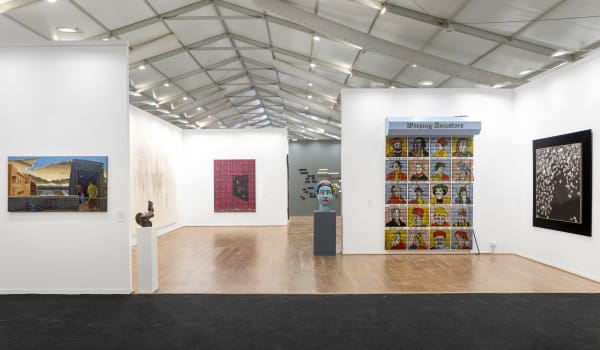
India Art Fair 2025
6 - 9 February 2025As we remain committed to broadening our perspective to reflect more voices across the Indian Subcontinent and the South Asian diaspora, we are delighted to...Read more -
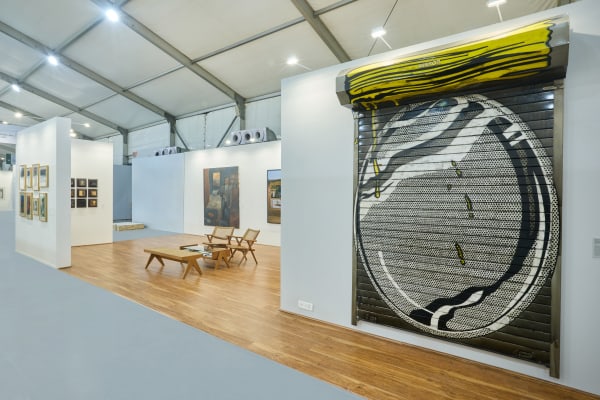
Art Mumbai 2024
Mahalaxmi Racecourse, Mumbai 14 - 17 November 2024With a diverse roster of artists across conditioning, intention, practice and cultural attitudes, our presentation seeks to engage with the contemporary cultural imaginations of the...Read more -
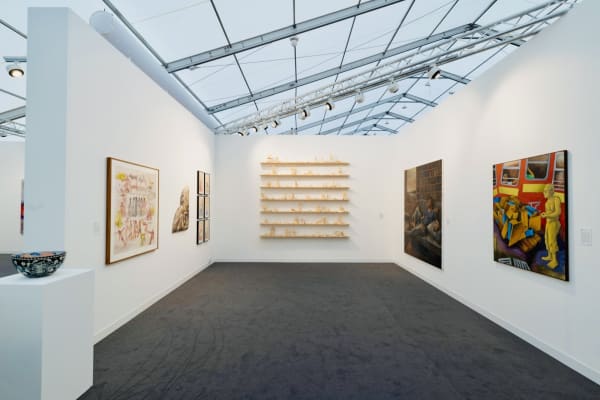
Frieze London 2024
And The Strokes Come Like Speech 9 - 13 October 2024Our curation titled And the Strokes Come Like Speech presents the artwork as an archaeological site, as similarly load-bearing to an edifice – a material...Read more -

INDIA ART FAIR
NSIC Grounds, Okhla, New Delhi 1 - 4 February 2024With a diverse roster of artists across conditioning, intention, practice and cultural attitudes – including A. Ramachandran, Anita Dube, Anju Dodiya, Atul Dodiya, Balkrishna Doshi,...Read more -
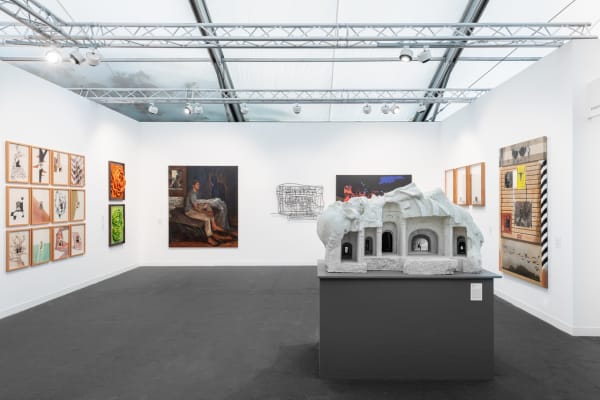
Frieze London
Regent's Park, London 11 - 15 October 2023“The limits of my language are the limits of my world,” wrote Ludwig Wittgenstein, referring to language’s ineffectiveness as a cognitive modality to fully grasp...Read more -
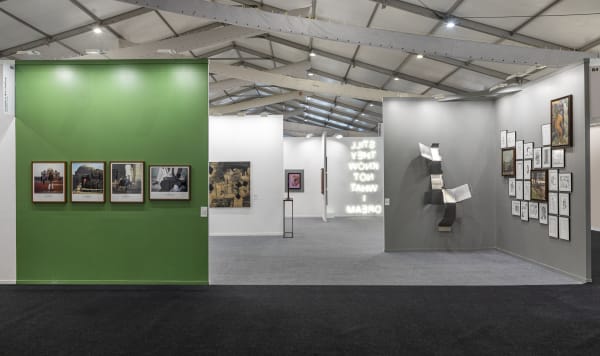
INDIA ART FAIR 2023
NSIC Exhibition Grounds, Okhla, New Delhi 9 - 12 February 2023With a diverse roster of artists across conditioning, intention, practice and cultural attitudes – including A. Ramachandran, Anju Dodiya, Atul Dodiya, Balkrishna Doshi, Biraaj Dodiya,...Read more -
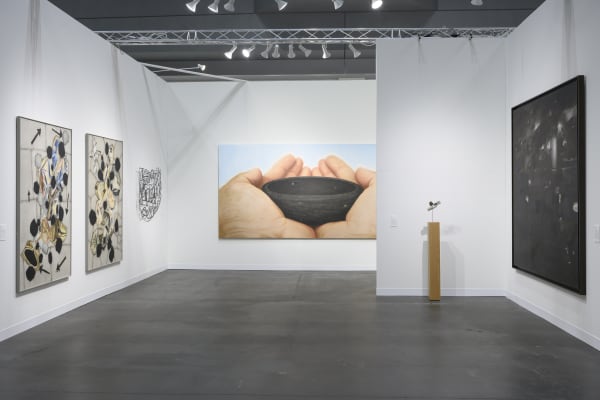
THE ARMORY SHOW
THE LIGHT SIDE OF THE MOON 8 - 11 September 2022In the Hero’s Journey , Joseph Campbell contends that a hero – “someone who has given his or her life to something bigger than oneself”...Read more -
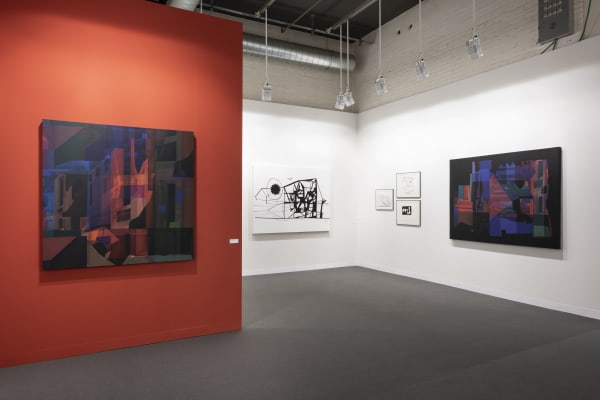
Art Basel: Basel 2022
Balkrishna Doshi: Labyrinth of Dreams 14 - 19 June 2022Urbanist, academician and architect Balkrishna Doshi was awarded the prestigious Pritzker Prize in 2018, the profession’s highest possible accolade, in addition to India’s penultimate national...Read more -
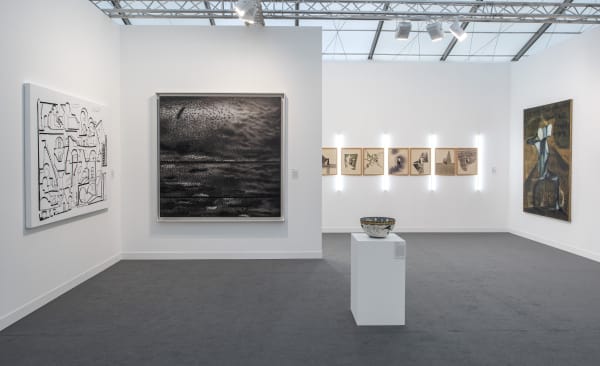
Frieze London 2021
A Brief Current 13 - 17 October 2021A Brief Current features a collection of recent artworks by leading Indian contemporary artists Rameshwar Broota, Atul Dodiya, Anju Dodiya, Sunil Gupta, Shilpa Gupta and...Read more
-

Inside IIM Bangalore, where BV Doshi's architecture is at one with nature
by Bijoy Ramachandran | Architectural Digest 31 October 2024“There are various ways you can greet a person: you may shake hands, you may say namaskar, or you may embrace. In his [BV Doshi’s...Read more -

25 drawings of BV Doshi—a lifelong keeper of sketchbooks—show at Vadehra Art Gallery
by Somak Ghoshal | Architectural Digest 16 October 2024While conferring the prestigious Pritzker Prize to BV Doshi (1927-2023) in 2018, a 10-member jury lauded him for practising “the art of architecture” throughout his...Read more -

Remembering Balkrishna Doshi, artist, teacher and father of modernist Indian architecture, who has died, aged 95
By Louis Jebb | The Art Newspaper 22 March 2023Balkrishna Doshi, one of the most thoughtful and original architects of his generation and creator of a string of highly admired community and educational buildings...Read more -

Balkrishna Doshi wins 2022 RIBA Royal Gold Medal
Dezeen 9 December 2021Indian architect Balkrishna Doshi has been awarded the Royal Institute of British Architects' Royal Gold Medal for 2022. Awarded annually by the Royal Institute of...Read more -

Bikaner House: Collaborative in-person exhibitions are back
By Gerogina Maddox | The Hindu 5 March 2021The last time I walked into Bikaner House was just before the lockdown was announced. I saw an exhibition featuring the works of Pooja Iranna...Read more -

Balkrishna Doshi's "Architecture For The People" Retrospective To Open At Architekturzentrum Wien
World Architecture 5 March 2020Balkrishna Doshi's 'Architecture for the People' retrospective is set to open at Architekturzentrum Wien on March 26 and will be on view until June 29,...Read more -

Top Architecture Prize Goes to Low-Cost Housing Pioneer From India
By Robin Pogrebin | New York Times 7 March 2018Balkrishna Doshi doesn’t talk just about his buildings. This architect, urban planner and educator talks about how his buildings aim to foster a sense of...Read more




